A little more than six years ago, Everything Is Noise was born from the ashes of It Djents, a drastic change in name and image that effectively served to sever our ties with the then-diminishing (quality-wise; we all know the rip-off bands never stopped coming) scene that we were previously deeply entrenched in. Even though a certain pang of melancholy could not be avoided given how much we cared about djent and how much time and passion we put into the scene, the excitement of a fresh start was overwhelming: no longer would we be bogged down by the association to a trend that had long started to become stale and uninspired aside from a select handful of acts.
Afterwards, most of us kind of let the musical aspect of our previous identity slip away, immersing ourselves in the vast cultural treasury that is the international music community. So much to know, so much to see – how could one stay rooted in one spot while trying to capture the wealth of fantastic music out there? Thus, djent and its associated sister genres fell by the wayside, either organically or by choice.
This doesn’t mean that it was all bad at all times, though. I can’t thank that scene enough for introducing me to so many genres outside of the heavy, guitar-based music I was primarily consuming back then. From indie pop to folk to modern jazz: the djent community was open to a diverse set of influences and listening habits from the very beginning, which has indelibly shaped my own approach to music curation. Many of the people I (and we as a team) met over the course of our It Djents days are and were still very treasured friends and connections. And by and large, many of the bands and records we adored back then still went hard – we simply didn’t give them as much space anymore.
Now here’s the kicker: at some point during the past 6 months, a few of us have (individually, communally) been dipping their toes back into the old familiar pond, either out of nostalgia or absolute coincidence. What we found was that while our decision to leave that scene behind was warranted in order for us to grow our own identity, we still loved and cared for a lot of the music we celebrated back when we were still operating under our old moniker. When we realized that there were many among us who were open to reinstating that part of our journey, we came up with a simple idea – let’s put together a list of, say, 25 records to showcase the breadth and scope of the djent heyday. Which is exactly what we then set out to do, starting a process that culminates in what we are proud to present to you today.
You can take a blog out of the scene, but you can’t take the scene out of our memories. This article is for every It Djents reader who stuck with us through our name change. For every former and current writer who were there for our djent days and beyond. And just as importantly, this is for every band we loved from that time, and for every record that shaped a little piece of our shared journey. Maybe djent was never meant to be about the music alone –
Maybe the real djent was the friends we made along the way.
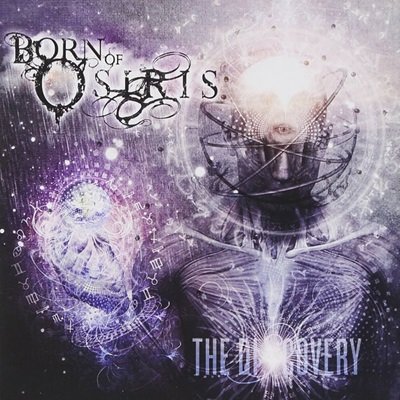
Out of all the bands that helped give shape to djent and modern progressive metal, Born of Osiris, and specifically their album The Discovery, feels like something that is very much of the time. I remember really enjoying this album back in 2011, and I guess I still do to a certain degree, but I really need to be in a nostalgic mood.
That’s not to say there aren’t moments that have still stood the test of time. “Follow the Signs” and “Singularity” are back to back bangers that were defining tunes for the band, and really the album as a whole. Songs like “Recreate” and “Automatic Motion” are so groovy and have those flashes of genuinely good song writing. In comparison, they tower over bland songs like “Two Worlds of Design” or even one of the many little electronic filler tracks.
And that really sums up The Discovery. Some genuine moments of excellence that are linked together by slew of melodic deathcore brown noise. The moments of inspiration across the album can mostly be attributed to Jason Richardson’s lead guitar work , as well as some really great melodic key lines from keyboardist Joe Buras. Weirdly enough, he also left the band earlier this year after being one of the longest serving members.
When this album is good, it’s great. But when it’s bad, it tends to be pretty tedious in nature. At 52 minutes run time I find it hard to recommend giving this a spin just for the nostalgia factor, especially when so much of it feels like filler.
– Paul Williams

Periphery – Periphery II: This Time It’s Personal
July 3, 2012 // Sumerian Records/Roadrunner Records
It’s been 12 years since Periphery‘s sophomore full-length dropped. I am not sure the band, or others flying the djent banner, have since surpassed the startling mix of hooks, technicality, emotion, ambition, humour, and scope on display with Periphery II: This Time It’s Personal.
Periphery has had a staggering breadth of output since 2012, but PII has a youthful energy, vulnerability, and execution that revealed the promise of band’s future output. A track like “Make Total Destroy” takes SikTh-like technical riffage to its limits while reaching a level of heaviness and chaos few bands can channel – and it still had a chorus huge enough to justify its place as lead single. “Scarlet” showcased Spencer Sotelo’s voice and Mark Holcomb’s inimitably melodic riffage at an even higher level, shutting down many a critic of Sotelo’s performance on their debut record. At the same time, it had a memorable music video that captures the band’s irreverent humour.
Amidst its massive scale, gargantuan hooks, and chaotic arrangements, there is an emotional throughline to PII. This is found in the lyrics of songs like “Luck As A Constant”, where outside of its bafflingly incredible opening riff, Sotelo explores moments that resonate my own doubts with faith while “Mile Zero” reflects on grief. But, as a whole, this record is special in showing a band with tremendous potential overcoming doubt and expectations to create an album that, to me, is still the high watermark of djent more than 10 years since its release.
– Landon Turlock
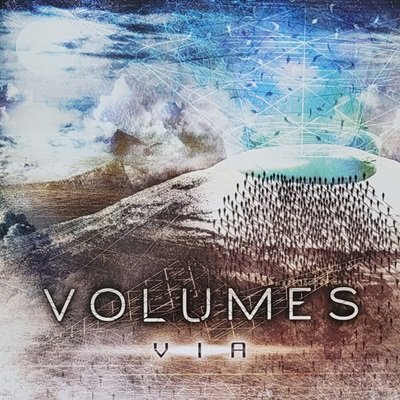
13 years have passed since Volumes dropped Via, a record that played a huge role in shaping both the landscape of whole spacey djent movement in general and also, although not as important, my personal taste in progressive music, which is why I was more than happy to board the nostalgia train and delve into the depths of this record once again for this feature.
And hell yeah, I was in for a treat because Via aged like fine wine, hitting me straight in the face with the groovy monster that is the album`s opener “Paid in Full”. 40 seconds in and you clearly know what to expect during the following 50 minutes: intricate grooves, duelling vocal parts and a whole lot of thick atmosphere underlying the low-end chugs typical for that time. “Wormholes” then introduces melodic textures to the mix, making the complex rhythmic sections easier to digest and letting the listener catch a breath occasionally.
What I always admired about Volumes is that they focused on actual songwriting and not only mindlessly chugging the open strings (which is what too many bands unfortunately did back then in the spirit of ‘style over substance’) and you can clearly hear on the more melodic songs like “Intake” or “Edge of the Earth”, the latter even being one of the best songs of that era in my opinion.
In retrospect, Via definitely stood the test of time and surely played a major role in the evolution of a whole genre, helping to bridge the gap between chuggy metalcore and the more progressive, ambient-leaning side of djent.
– Valentin Bock

Without this record right here, I don’t think my personal nostalgia for the times of the djent scene would’ve been ignited. You see, I had long since filed those times under ‘that was nice, don’t need to go back though’ and was content to leave it at that. Then I heard “Nocturne” again for the first time in years, and I was right back where I left off in my mid-20s. Amos Williams’ dominant bass and Ashe O’Hara’s beatific vocal performance always made this song for me; perhaps they were even the dominant elements of TesseracT’s style in my eyes, but that doesn’t matter now. I was back. Altered State was back. TesseracT were back.
The album’s flow is sublime – even for a concept record – and there are so many resplendent moments crammed into its runtime that trying to enumerate them here would already crack the word limit. It just begs to be listened to as a whole, and I’m glad to have rediscovered it. My view of djent was initially shaped by this album, and now my reappraisal is happening in the same way. Altered State by TesseracT might be *the* djent album, amongst a select handful of worthy contenders. There’s only one thing left to say as far as I’m concerned:
#ashewasbetteract
– Dominik Böhmer
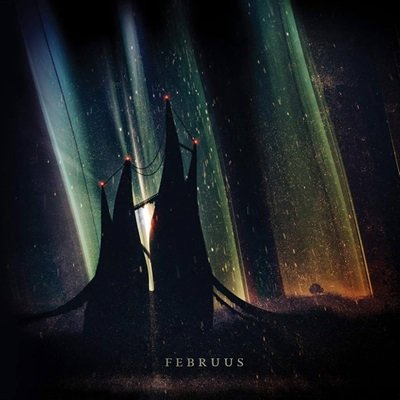
A record that took djent to a whole other level, masterfully blending European progressive tones in with the wall of sound. A record that took absolutely ages to come out, so much so that when I hear the word ‘Februus’, I immediately attach ‘wen’ to it. A record that still, to this day, completely and utterly holds up as a timeless classic.
French band Uneven Structure had made waves with their debut EP 8, released in 2009, and subsequently joined the burgeoning roster at Basick Records. After dropping the single “Frost”, I remember the prog metal and djent circles being abuzz with excitement. And the full album does not disappoint.
The album plays like a story with tracks blended perfectly into an epic tale. Dotted with quality ambient sections, furious prog-djent-metalcore, and climaxes that take you aback, it’s a captivating and invigorating experience. Polyrhythmic grooves aplenty, plus a stunning vocal performance by Matthieu Romarin sets this album apart.
The opening three tracks set out most of the band’s soundscape and do so uninterrupted, meaning that you stay completely absorbed in the music. The transition from “Frost” to “Hail” is still one of my favourite in metal history, with the latter unleashing unfathomable levels of chaos after some soft ambience. “Buds” was touted as the fan favourite by many around release, but I consider it a crime not to play the album all the way through. “Plenitude” into “Finale” is one of the best album closers of all time, a perfect climax to a magnificent album.
– Pete Overell

As a fan of extreme metal – more specifically death metal – a lot of the djent movement never really appealed to me: bigger productions, pervasive pop-leaning clean vocal lines, and an often overreliance on dynamic interplay of the verses and choruses. Sometimes I want the music to just stomp the everliving guts out of me and if there is one djent record that does just that, it’s Måsstaden by Swedish thallsters, Vildhjarta. Instead of rehashing the tropes from within the scene this album leaned far more into Meshuggah’s stylings than the crop of bands around them.
Ferocious vocals, genuine progressive songwriting, and a production that feels tense and suffocating and I love it all for this. “Eternal Golden Monk” finds Vildhjarta toying with dissonance, “Traces” shows contrasting vocals without veering into sentimentality, and “All These Feelings” plays with atmosphere in creative and engaging ways. From start to finish this is a percussive, atmospheric, and deathly heavy record that is smartly paced, dynamic, and never strays into style over substance. For these and so many other reasons, Måsstaden stands as the pinnacle of the djent movement in my humble opinion. It’s percussive, dense, and Vildhjarta left an indelible mark on the heavy music scene when they unleashed this album upon us.
– Jake Walters
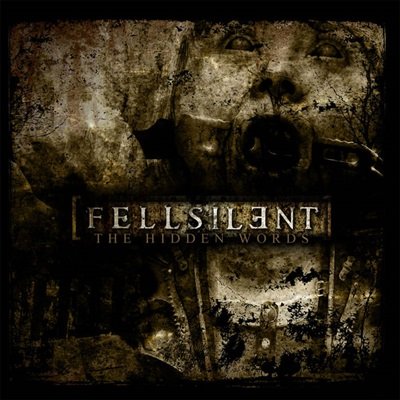
It may be a betrayal of nostalgia that we do not have a Monuments album on this, some would say (just us), ULTIMATE djent list, but I personally pushed for Fellsilent to be included instead. In case you don’t know, Fellsilent are the de facto forerunners of both TesseracT and Monuments, featuring both of the main guitarists from those bands, as well as laying the groundwork for the kind of style those bands would go on to follow – Monuments definitely more than TesseracT, to be fair. For what it’s worth, Monuments may have added tons more layers and elements to the Fellsilent sound, but for me, Fellsilent had already hit the peak of what they were trying to do – a super groovy pulse, a kind of sped-up funk with tons of chugs. I live for that shit.
The idea of having two vocalists with similar delivery was clearly a homage (theft) to the great and most important British djent veterans, SikTh. The vocal duo of Neema Askari and Joe Garrett were able to deliver fast-paced, rap-like lines that only added to the relentless groove of The Hidden Words. Both the vocals and the instrumentation boil down to what makes this album the best – I’ve said it before, but hear me out because it can’t be said enough: this album fucking grooves.
I have always felt that Fellsilent are still one of the unsung heroes of the whole djent movement. Their name might ring a bell for people who have been socialised with djent, but it’s rarely mentioned as one of the cornerstones of the genre. It lacks the overpolished production of TesseracT or Periphery, and it’s not as br00tal as Vildhjarta either, but damn it, it fucking grooves.
– Toni Meese

Plini – Other Things/Sweet Nothings/The End of Everything
March 11, 2013/October 11, 2013/March 11, 2015 // Independent
Djent, around the time it started blooming, quickly became a scene wrought with equal parts endless copies of copies and outstanding bands. However, it was super popular and to some extent it still lives on even today, albeit more as a husk of its former self (or what it could have been). Plini, arriving just in time to ride the hype wave around late 2011, didn’t mince any sounds as he unleashed upon us some of the finest tunes the genre could ever hold. It didn’t take long for his musical identity to settle in and by 2013 we saw the start of the Things Trilogy.
Other Things, while short, is sublime and immensely memorable. This is due in no small part to “Selenium Forest”. A song that holds up to this day with the strength of a thousand suns. Simply stunning and beautiful. I must have heard it hundreds of times by now.
Cue Sweet Nothings shortly after, continuing the lovely trilogy. It’s further showcased here that Plini always had an awesome and clear vision. Much like Other Things, it leans equally into virtuosic bursts and playfully colorful arrangements. The End of Everything rapturously concludes this spectacular journey, about two years after its inception, with fireworks gushing in every direction.
Plini’s highly lyrical and epic stylings transpire adroitly, as well as his djenty and progressive ones and I can safely say that the trilogy endured the test of time heroically, standing stalwart as a timeless work of art, long after the genre’s hype is dead.
– Robert Miklos
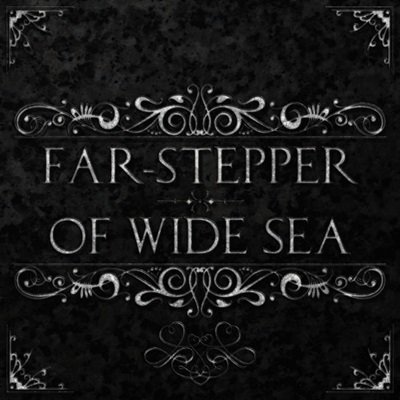
Returning We Hear the Larks – Far-Stepper/Of Wide Sea
June 25, 2013 // Murder on the Dancefloor Records
Returning We Hear the Larks came at a rather crucial time for me in terms of my teenage years, discovering new things and hearing how very different things can be mixed and pushed to extremes. The Bristol-based artist released his second full-length under the project in 2013, and Far-Stepper/Of Wide Sea became something of a cornerstone in my personal musical journey. Combining precision-cut heavy rhythms with melancholic atmospherics and a thorough and intriguing thematic narrative in a way that’s as unrelenting as it is fragile, and underlined by its rough-around-the-edges production, Far-Stepper/Of Wide Sea has stood the test of time in divine fashion and, for me at least, remains unparalleled in many ways to this day.
One-man bands began to flourish during the whole djent debacle, and Returning We Hear the Larks is one of the finest examples of this, and rather obscure as such – the album can still be considered a deep cut of sorts, though most people invested in djent as a movement tend to know every last fucking detail of every single thing that was or is in it, so plastering it all over your face via this feature felt apt. The album has also recently been re-recorded and re-released in a new form, although I’d advise you to dig into the original first and foremost for its rawness.
– Eeli Helin

There are not many records in this world that have an opening track as intense as After the Burial’s “Berserker” – a song that immediately and without any trace of hesitation sets the tone for the band’s sophomore effort Rareform, a record that is full of filthy grooves, technical proficiency, and devastatingly heavy breakdowns.
Whenever I listen to Rareform, I’m always struck by the album’s production that surely shaped the way a whole genre wanted to sound like back in the day. Especially the kind of dry guitar tone inspired many bands to come, making the low-end grooves insanely abrasive while still letting the lead guitars cut through.
Although I like their later records a little more (“A Wolf Amongst Ravens” would be my number one choice if I had to show someone a prototype djent song), there’s no denying that Rareform is one of the most influential records not only for the djent movement, but for modern metal in general. After The Burial were one of the very first bands to use extended range guitars in the way they were meant to – and you can really hear that throughout the record, especially on standout tracks as the infamous “Cursing Akhenaten”, “The Fractal Effect” or the album’s title track.
The closing track “A Vicious Reforming of Features” then perfectly blends Meshuggah-esque rhythmic chaos with a modern twist, almost acting like a gateway drug for a younger generation into the realms of rather traditional progressive metal.
In retrospect, I’m forever grateful that After The Burial wrote Rareform, because without it, I’m sure many of my favorite bands would have never existed. Truly a groundbreaking and genre-defining record that should be in the playlist of everyone remotely interested in metal.
– Valentin Bock

What an absolute dark horse of a record! This band, for me at least, came out of complete nowhere to dominate my listening habits for weeks (or rather, months) on end when Thrones finally dropped after a long period of anticipation. To be fair, that anticipation was completely lost on me; Alaya weren’t really part of my considerations until their album entered my consciousness. Thanks, Basick Records!
With only guitars, bass, drums, and vocals, you’d expect this record to be fairly limited in terms of what one would want out of a djent record. But this power trio made the best of their set-up and dominated with a sound that was sturdy and imaginative in all the best ways. They worked more like a proggy alt-rock band, but with that meaty djent tone and polyrhythmic mastery you’d expect from a band with twice the personnel. The theatrically rugged vocals of guitarist Evan Graham Dunn alone set this band worlds apart from the pack without separating Alaya from the scene they clearly belonged to.
There were times where I listened to Thrones at least once every single day on my way to or from university, along with a small number of other records. That alone is a compliment of the highest caliber, but the music Alaya made 100% deserves that treatment. I still hope they might return with another record at some point. Until then, it’s Thrones or bust, baby!
– Dominik Böhmer

The Joy of Motion feels organic in a way that is actually hard to describe. With no vocals to latch onto the focus is entirely on the music. The instruments themselves start to take on a voice of their own. They speak in words of notes and phrases of melody. It’s an intimate experience that I still find chilling to this day from beginning to end. It is simply astounding how Animals As Leaders create beautiful imagery and a compelling engaging musical experience. This album is lush and complex, somehow rewarding repeated visitation with nuance and familiarity. Even compared against albums outside the realm of instrumental music, The Joy of Motion conveys an intense amount of emotion. Without uttering a single word, Animals As Leaders have plenty to say.
As much as The Joy of Motion is an instrumental prog-metal album, it is ultimately a guitar driven record. The album is defined by aggressive leads, groovy riffs, these quiet muted percussion like sweeps, melodic passages, and of course more djent than you can shake a stick at. Guitarist Tosin Abasi is absolutely in the same class of guitar virtuosos as Buckethead, Satriani, Vai, Petrucci, and Gilbert. All of these modern day shredders melding extravagant technicality with superior songwriting.
To simultaneously be one of the best instrumental albums and one of the best djent albums of all time is one hell of a magic trick. But that is exactly what Animals As Leaders pull off with The Joy of Motion.
– Adam P. Terry

David Maxim Micic – BILO (Tetralogy)
March 12, 2011/May 28, 2012/November 17, 2013/November 25, 2022 // Independent
This is, once again, a bit of cheating. As we did for the Plini‘s Things Trilogy, we are putting all parts of David Maxim Micic‘s BILO series in here. Also a little disclaimer: I haven’t spent a lot of time with BILO IV, because it was released…recently. Sorry for that. The lines where djent starts and djent stops are blurry to say the least, so when we got this list together, it was more of a feel thing. Meshuggah, Textures, Cloudkicker, tons of djenty metalcore stuff? Doesn’t really feel like djent for us, although some beg to differ, rightfully so, but hey, it’s our list. What is very much part of djent in my cosmos are the whimsical, fantastical stuff by solo artist David Maxim Micic. While I never vibed with his band project Destiny Potato, his solo stuff, especially the BILO records, holds a special place in my heart to this day.
There is something worth discovering in this music – in parts, it evokes similar feelings like Joe Hisaishi scoring a Ghibli movie. I wanna explore those aural realms, see what kind of creatures lurk in its depth, rest at a picturesque little lake in the midst of an overgrown forest. That kind of shit. Also, that cat can shred.
While a lot of artists who dabbled into instrumental prog in the context of djent fell into dull formula pretty quickly, with the same riffs and the same grooves recycled for the umpteenth time, David Maxim Micic seemed to always dance to the beat of his own drum. His music feels always authentic. Yeah, sometimes it’s a bit overachieving, sometimes a simpler solution would have served the song better, but it’s his party, his world. Thanks for letting us be part of it, pal.
– Toni Meese
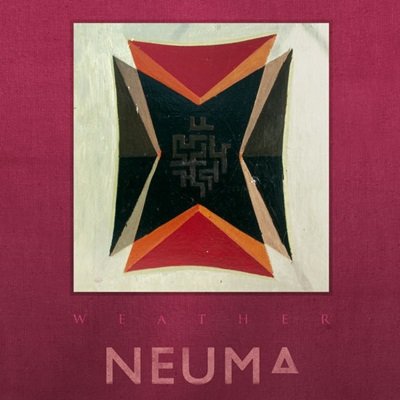
Neuma – Weather
November 26, 2006 // Independent
I could have picked a couple other records instead, but Neuma‘s Weather ended up to be my choice to talk about proto-djent. While we didn’t considered Meshuggah to be listed in here as a djent band, we still included a couple djent-adjacent bands who are part of interesting niches roughly surrounding the genre. One particularly interesting niche is the Polish prog/avantgarde metal scene. Bands like Kobong (de-facto predecessor to Neuma), Atrophia Red Sun, Ketha, Nyia or Proghma-C (more on them later). Weather is a particularly weird specimen from that world – one would not think of djent when listening for it. Still, for me personally, this niche feeds into early djent quite a bit, especially the more experimental side of things.
As you’ve already read, there are a quite a few bands to mention here, and that’s only on particular scene. There is tons of stuff around the globe which can be considered proto-djent (think about the prog death band Coprofago or ambient post metal outfit Benea Reach). Djent always had the neat quality of producing or highlighting a lot of stuff which happens on the sidelines – I would have never stumbled upon something like Neuma if it wasn’t for djent sparking my curiosity for experimental or avantgarde music. In the end, Meshuggah are pretty experimental themselves, and most djent only took the chug chug from it. So, consider this pick more out a shoutout for the weird side of djent.
– Toni Meese

SikTh – The Trees Are Dead & Dried Out Wait for Something Wild
August 18, 2003 // Unparalleled Carousel/Gut
SikTh are in my opinion, one of the biggest drivers in the early 2000’s scene that led to the meteoric rise of djent, whilst NOT being the stereotypical definition of djent themselves. Melodic progressive hardcore, prog metal, and so on, they fall into a multitude of genres.
But what is irrefutable is their impact on the UK scene, spawning Fellsilent, which lead to Monuments & TesseracT. This enamoured the multitude of UK & European bands that emerged and drove the sapling scene to the global markets.
Death of a Dead Day might be lauded as their most refined, but it didn’t spurn creativity in the scene like its forebear. Trees is without a doubt one of the most unique albums to ever grace my ears. Weird, emotional, and above all groovy, you never know what is around the next corner, which is what the best djent bands deliver.
The opening trilogy of songs is a whistle stop tour of their sound, or so you think. Frenetic, with brilliantly metered softer sections, these tracks get you really pumped up and bouncing. “Skies of Millenium Night” brings you back down to earth with stunningly complex layers of guitarwork that gets the brain working, before the next six songs send you on a psychedelic and at times challenging journey through complex song crafting and delivery.
Emerging on the other side, you have another trilogy of high energy songs, led by “How May I Help You?”. This monster snaps you out of your mind-palace, but keeps the weird going until the dramatic poetry closer from Mikee. A perfect album, which the band still perform perfectly live. When they pop up again (with Justin), make sure to catch them.
– Pete Overell

Better put all my cards on the table from the get-go. I’m a big Daniel Tompkins fan boy. Dude has those pipes that make me feel funny in my tummy. The less said about it the better. However, if it wasn’t for Dan leaving TesseracT and joining Keshav Dhar’s Skyharbor we’d be all the poorer in terms of musical gain.
Think about it – if Dan didn’t join Skyharbor for their debut album and Guiding Lights we likely wouldn’t have had either Eliott Coleman or Ashe O’Hara fronting Tesseract for a moment there. Oh, what we would have lost.
Anyway, what can be said about Guiding Lights, apart from it being an absolutely buttery smooth, intricately layered progressive metal opus? Well, while plenty of bands had explored brain boggling polyrhythms or employing crushingly heavy riffs to define the djent sound, Skyharbor went in a bit of a different direction. This album is defined by its warm atmospherics and progressive metal influences like Karnivool rather than Meshuggah.
There are so many excellent moments in this album. The features from Mark Holcomb and Plini that bookend the album; the excellent song writing that won’t let your attention wane for even a second; the fact that I can barely make it through “Patience” without a singular tear rolling down my cheek. This isn’t just a great djent album, this is a fabulous metal album that doesn’t get the props that it really deserves.
– Paul Williams

Ah yes, another weird deep cut. In 2011, my groovy friends and myself attended our very first Euroblast – a place of music which lost me in recent years due to their booking choices, which just doesn’t align with my expectation, which is more my problem than theirs, obviously, but which I hold dear to my heart due to the countless fantastic shows I experienced at the festival – that was a very long in between sentence, so let me start again. 2011, Euroblast. We were super excited to see all the usual suspects, Textures, Monuments (who played an instrumental set, best Monuments show ever), Vildhjarta (which played Måsstaden in full, what a privilege), Uneven Strutcture (which played Februus in full, god damn) and others. Nevertheless, I earned some weird looks from my mates for being particularly excited to see Polish band Proghma-C. I pitched them as a ‘djenty Tool‘ to my friends, which at least convinced them to come with me and watch the band instead of smoking a joint outside.
We ended up having an equally psychedelic experience. Clearly not used to big stages or playing live, Proghma-C played in introspective set of lowkey djent with and overarching Tool-ishness, and I was so fucking on board with it. Like I mentioned in my blurb for Neuma, this band represents the weird corners of djent, which made the whole movement so interesting as a whole.
I saw Proghma-C again a couple years later, with a slightly different line-up, again at Euroblast. It was my first visit at the festival as a journalist, and I was giggling with excitement on the prospect of talking to the band. I told them how much and for how long I liked them, and the band was clearly moved by it. It’s those personal experiences which shape the relevance of an artist for you as a fan, and Proghma-C gave me plenty of it.
– Toni Meese

Cilice‘s Deranged Headtrip is like getting trapped in a blender, but somehow you’re enjoying it. Released in 2009, this album came out when the djent scene was just starting to crank up its polyrhythmic gears. Deranged Headtrip doesn’t just ride the wave—it takes it for a joyride through unpredictable time signatures, complex riffs, and vocals that bounce between clean, guttural, and straight-up unhinged. It’s the musical equivalent of getting slapped by math equations, but in a way that makes you want to keep getting slapped.
For fans of progressive metal, Cilice offers a chaotic but calculated sound that refuses to stay in one lane. It’s a journey where Meshuggah-style syncopation meets the kind of experimental flair you’d expect from bands like SikTh. But Cilice is a little more off-the-wall—think of it as djent’s wild, eccentric cousin who shows up at the family reunion in a straitjacket and proceeds to shred a guitar solo no one saw coming. Also, the vocals might sound familiar, since they are provided by Textures‘ very own Daniël de Jongh.
What really sets Deranged Headtrip apart is its unpredictability. One minute you’re headbanging to an intricate groove, the next you’re wondering if you’ve accidentally tuned into a prog-jazz fusion experiment. But somehow, it all clicks. It’s an album that scratches that itch for technical precision, while simultaneously making you question what kind of musical acid trip you just signed up for. It’s intense, it’s insane, and it’s an absolute blast.
– Toni Meese

Those vocals! Seriously, this band completely hinges on the vocal prowess of Robert Luciani (ex-Vildhjarta) for me. Without his contributions, Means End might’ve been nothing more than a competent mid-card djent band, but his performance as a singer and unclean vocalist elevates them into the highest tiers of contemporary prog metal. Even though The Didact is their only record, the brilliance on display throughout its runtime is enough to suggest some serious talent and dedication.
Luciani left me utterly puzzled with the vocal lines he was able to capture within this record. Luckily, the rest of the instruments gave me enough to hang on to while trying to decipher and understand the graceful contortions of Luciani’s voice. I don’t mean to put the limelight entirely onto one person’s achievements, but as a passionate singer myself, I can’t stress enough how utterly baffling some of these songs are when trying to replicate them. And that’s just the clean singing!
Enough of that, though; The Didact is a record with immense staying power thanks to all of its parts. Many djent records have since put on some sort of patina, giving them a clear indication of time and place. Means End could drop The Didact on our bewildered heads two years from now and it’d still be astounding. I for one think it’s one of the most impressive and lasting efforts of the djent era.
– Dominik Böhmer

…Comes To An End by Drewsif Stalin’s Musical Endeavors is a hidden gem that’s been tragically overshadowed by Drewsif’s prolific online presence. Released in 2015, this album showcases his abilities as a musician—and *especially* as a vocalist—in the djent and progressive metal scenes. But, let’s be real—most people probably know Drewsif Stalin more for his memes, gear reviews, and YouTube antics than his actual songwriting.
Drewsif Stalin carved out a niche for himself as one of the djent scene’s go-to content creators. Between his goofy videos, gear demos, and tutorials, he built a massive following online. The irony? His music, especially …Comes To An End, often gets lost in the shadow of his internet persona. Which is a shame, because the album is actually a tight collection of groovy, chuggy riffs, punchy drums, and melodic layers. And don’t even get me started on his vocals! The guy’s got serious pipes—his clean vocals are hauntingly smooth, and when he switches to harsh growls, it feels like a switch flips from ethereal to ferocious.
Tracks like “Breakthrough” and “Escape” show that Drewsif isn’t just a funny guy on the internet—he’s got some serious chops. The album is technical but doesn’t sacrifice accessibility, balancing proggy complexities with headbang-worthy grooves. However, it’s hard to compete with your own meme-able personality when people are tuning in more for the gear jokes than the music.
If you’re into the djent scene and haven’t given …Comes To An End a spin, do yourself a favor. It’s time Drewsif Stalin the *musician*—and the singer—gets some well-deserved love!
– Toni Meese

Okay, hear me out. On paper, this album is nothing special. No offense to the band, though. And to be even more fair, this is basically djenty dad rock. But plot twist – that’s why I wanted it to be here. Most of you, even those who followed djent closely, probably never heard of Dawn Heist, and that’s definitely alright. Even I can’t even really pinpoint why I wanted this album on here, but for some reason, it was one of the first records I thought about when the planning of this feature started.
Maybe it’s because it’s representative for the countless bands who, no matter what kind of music they played, smacked some djent chugs on it. Catalyst is basically alt/dad rock, but with some chuggity chug chug, this transforms into something much weirder, but ultimately infectiously catchy. It encapsulates the dynamics of a cultural trend – in the end, even Nickelback tried out some djent riffs. The way djent slowly creeped into the rock mainstream was fun to experience. Usually, those ‘experiments’ crumpled and failed, but hey, there are some good examples. I dig Dawn Heist, and I’m sure you have similar picks in your catalog.
– Toni Meese

Carcer City – Infinite // Unknown
September 16, 2016 // Stay Sick Recordings
Line up changes, a bus crash, and signing onto Stay Sick Records laid the foundations for Carcer City’s third album Infinite // Unknown. The record is rife with layers and detail. Chompy guitar chugs and reverberating drums meet subtle synth elements. A strong sense of melody both up front and in the background define the album. But it’s Patrick Pinion’s vocal range that steals the show, his growls and crystal clear cleans are fiercely emotive.
Cinematic post-rock and lush soundscapes abound on Infinite // Unknown. In an interview with The Edge Magazine just before the album came out Patrick describes the mashup – ‘We’re trying to be the weirdest metal band possible. Strange sounds, electronic elements, acoustic elements, ambient elements, heavy stuff, breakdowns, fast riffs, slow riffs, drops, sub-drops…’
The opening track “Infiltrator” and “The Night is Darkest” are strong moments. But for my money the real highlight is the one two punch Infinite // Unknown closes on. “Truth pt. 1” capitalizes on Carcer City’s dramatic flair with a clip from the film Waking Life. Launching into the devastating closing track on “Truth, Pt. II”.
Architects‘ influence looms large over the album. Especially given they went on to explode in popularity, whereas Carcer City faded away after this outing. But while the similarities are present, Infinite // Unknown holds up fairly well. The album is polished in its presentation and confident in its delivery. Carcer City might not ever completely break free of Architects‘ gravity, but they stand tall enough to not be entirely overshadowed.
– Adam P. Terry

This is kind of awkward, but as hard as I rode the djent bandwagon back in the day, I only actually discovered The Safety Fire relatively recently. This gives me a slightly different outlook on how it aged and how great it really is.
The Safety Fire is probably not the first thing you think of when you throw the word ‘djent’ around. If anything, you might even argue they’re probably closer to Textures and BTBAM than anything else. However, the riffs, the attitude, the energy, and the timing are all perfect for them to have emerged as they did at that moment.
Digging in over the past few months, it’s safe to say that Grind the Ocean stands out as one of the most unique offerings of the djent/progressive metal scene of the early ’10s. It really has it all – angular riffs, heavy chugs, soaring vocals, hard hitting gutturals, memorable hooks, engaging melodies, you name it. I’m actually surprised how ‘current’ it sounds in terms of songwriting and production. I can only say it aged like a truly fine bottle of wine.
Each and every song has something amazing going for it, in an almost maximalist way. Personally, I can’t get enough of “Circassian Beauties”. I think it a very apt summary of what Grind the Ocean is all about and a great thing to have on repeat for hours on end. Although you can’t go wrong with absolute bangers like “Sections” or “Huge Hammers” either.
– Robert Miklos

Released on April 6th, 2010, [id] is, to this day, an integral piece of music history for me personally, as well as many other metal music enjoyers I’d venture to guess. The biggest thing about Veil of Maya’s legacy from this era up to their last moments with Brandon on vocals is just the unity I witnessed profoundly palpable within all who attended their shows; Back in my high school and even some college days, every time they’d come through RVA, literally every type of metal enthusiast (be them emo, scene kid, OSDM guy, biker dude, jock, hardcore guy, goth, prog nerd, or even some average joe who just wanted to fit in) would forget all about the clique mentality as soon as the intro riff to “Unbreakable” dropped.
What I always loved most about Brandon is he felt like a prog death metal Andrew WK for the band; Apart from his way with writing the most empowering, encouraging, ‘we will get through this together!!!’ lyrics over sick riffs, the guy had a way of making everyone in a room feel alright. He’d step one foot up on that stage monitor, and it’s like everyone in the room got saved with a silent reassurance that no matter how shitty life gets, everything will turn out okay. Even if I don’t find myself much of a fan in regards to their newer material post-Brandon, those first four albums will forever hold a special place in my heart. ‘Live together, die alone…’
– Dylan Nicole Lawson
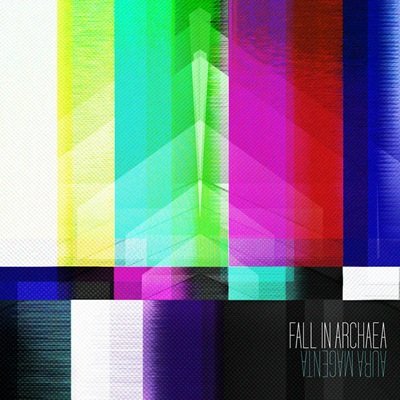
Long before Spiritbox, prior to his time in iwresteledabearonce, Mike Stringer was already shredding up a storm and melting faces in Fall In Archaea. Part of a wave of deathcore bands flirting with djent elements. Fall In Archaea took the frenetic energy of The Tony Danza Tapdance Extravaganza and blended it with the metalcore hook of Hollow Crown era Architects.
Their effort on Aura Magenta, the band’s first and only full album, was inspired and ambitious. Fall In Archaea focused on rhythmically complex guitar assaults with a rough driving energy. This blend of technicality with aggression, a splash of melody, and constant groove was key. “Magenta” starts heavy and maintains that flow throughout the track, but the keys and angelic choir that hit at the midpoint make it truly stand out.
Melodic moments break their way into all the aggression of whirling scales and battering drums. There’s room to breathe here that isn’t always afforded in the constant smash of some more straight deathcore or tech death projects. Many of the elements Mike would go on to explore in later projects were on full display here while maintaining his signature intensity.
Aura Magenta is a bit rough and disjointed at times, but it showed so much promise. Leaving plenty of room to wonder what might have been given further room to explore. But like so many things a part of the charm is perhaps in its brevity. Fall In Archaea might have burned briefly but they were brighter for it.
– Adam P. Terry



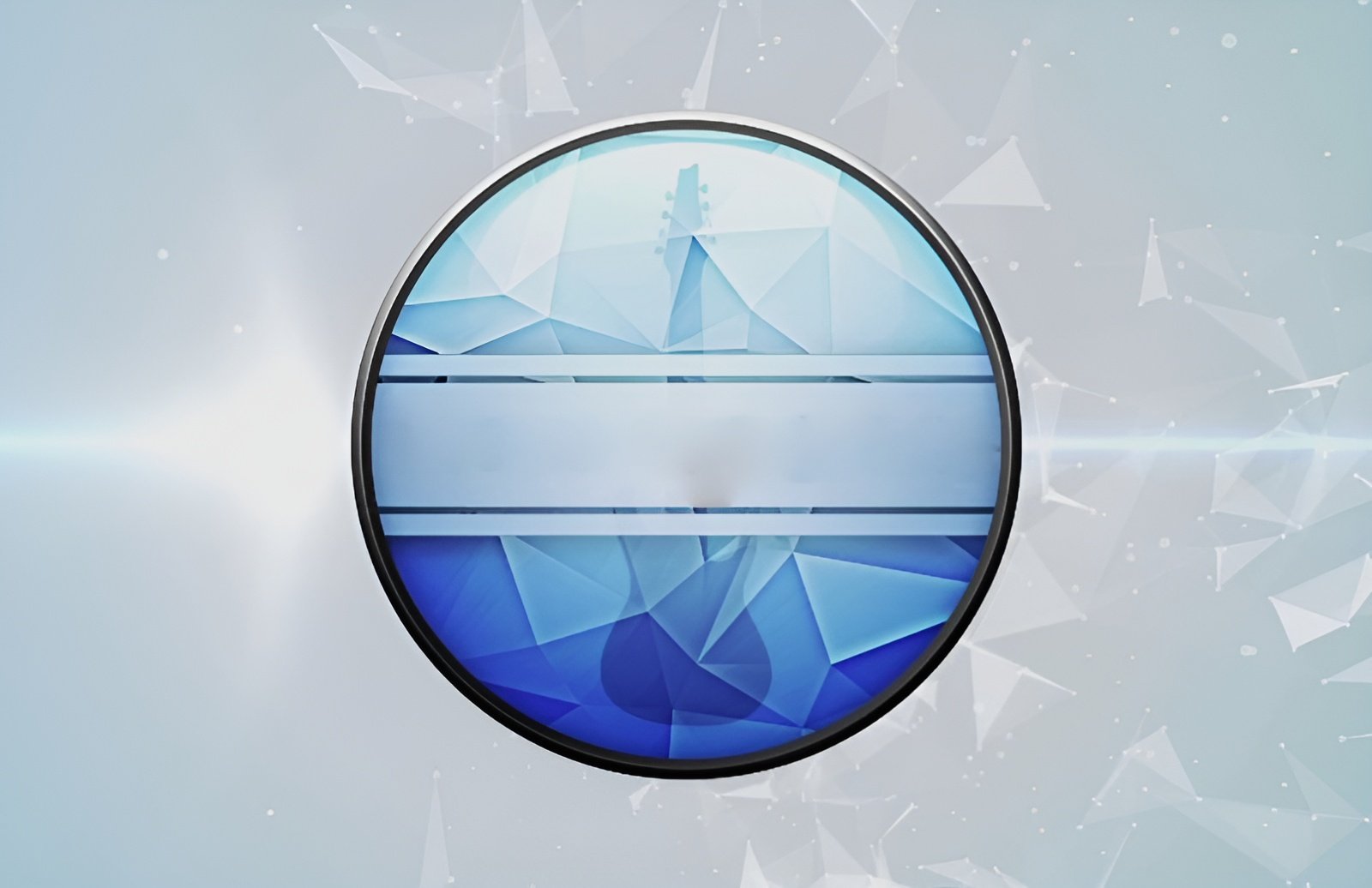


I still listen the the Didact by Means End religiously. Robert Luciani is a such a gifted vocalist. I’ll always have a soft spot for It Djents for introducing me to that band with a review of their first EP. His new project Chromaform is also good.